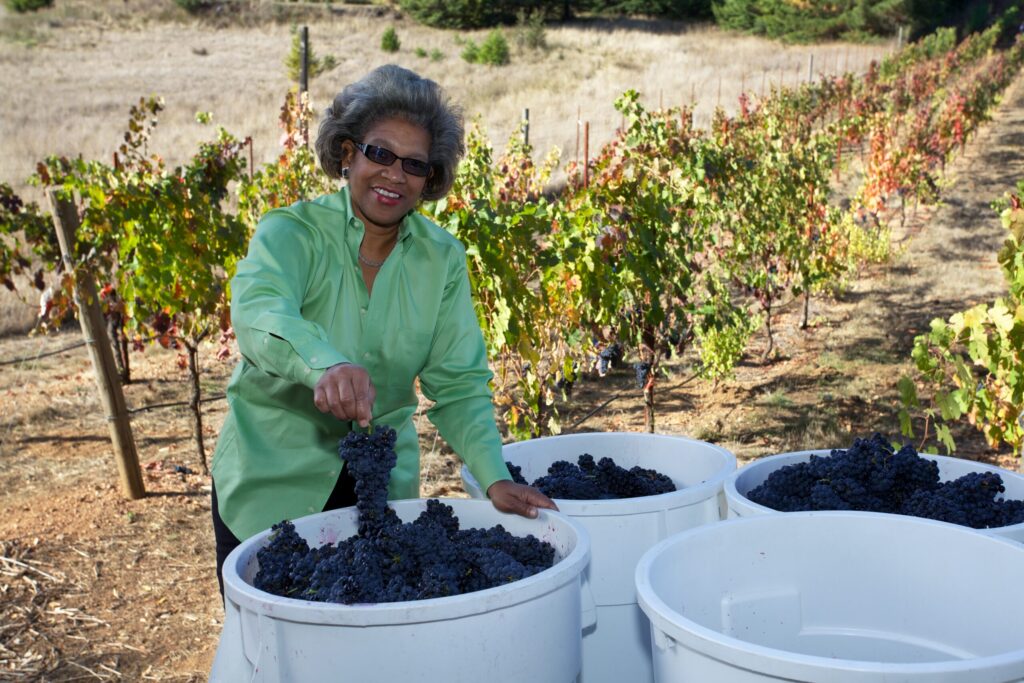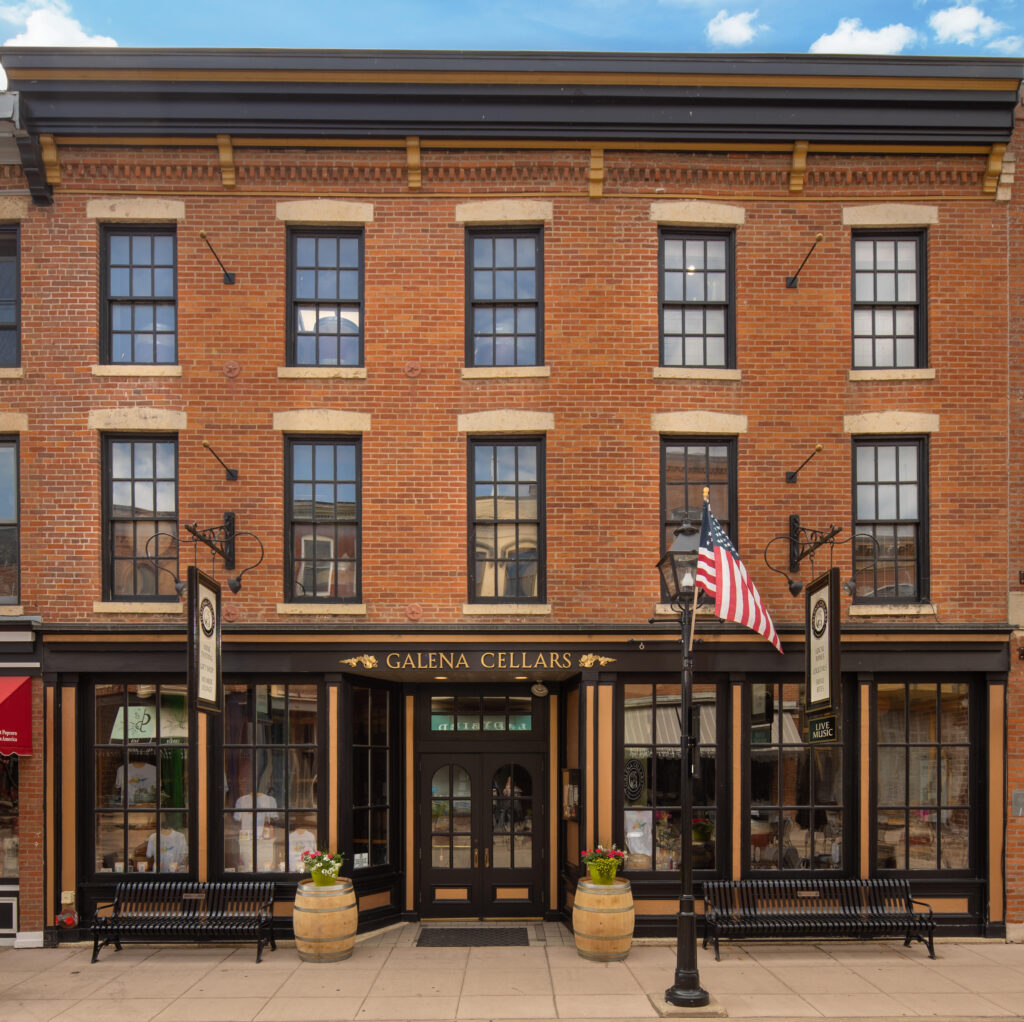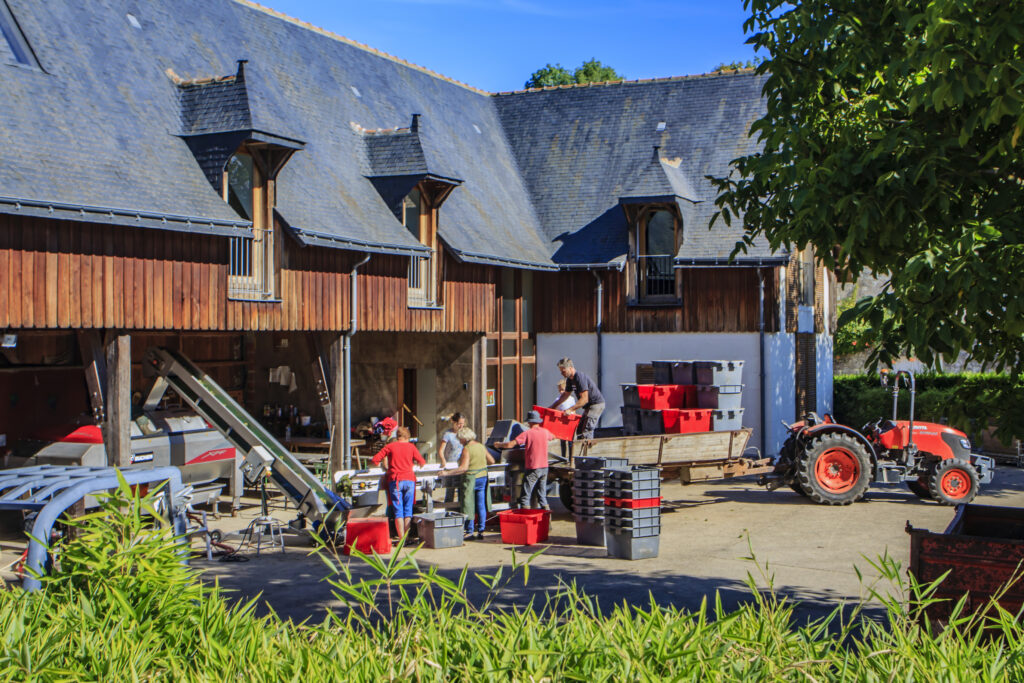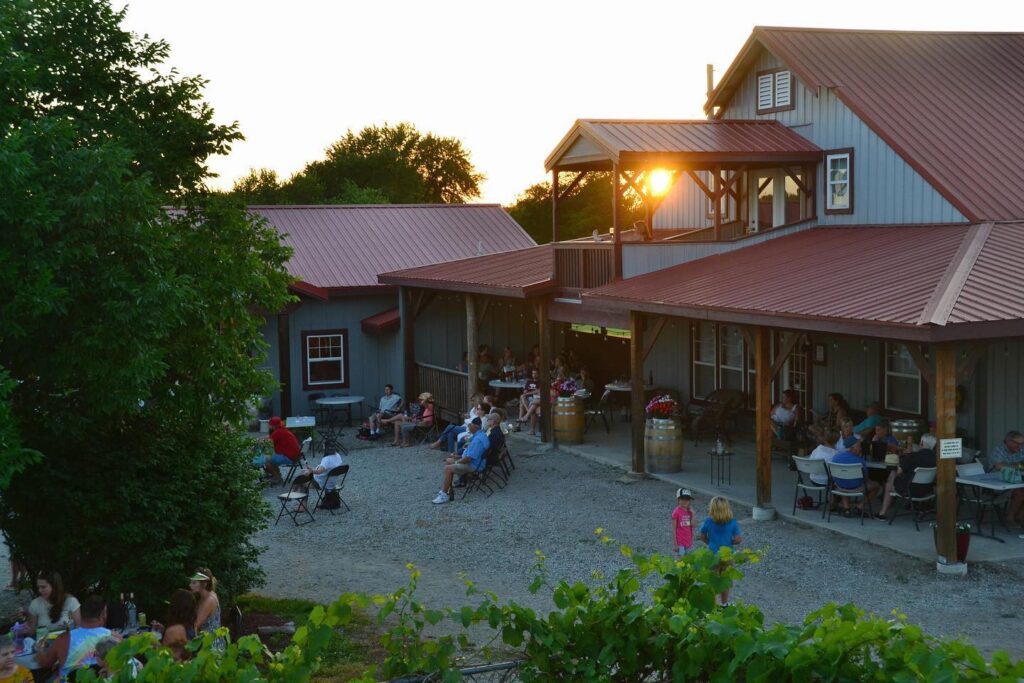Small Batch Wines With Big Personalities

By: Gerald Dlubala
Blu Dot Farm & Vineyard is a boutique farm, winery and vineyard with a notable history and a bright future. Nestled between the shores of Lake Charlevoix’s and Lake Michigan with terroir directly influenced by the Great Lakes and historical glacial drift, it happens to also be the ideal place to grow great grape varietals. The estate vineyard stretches over approximately eight acres and is owned by Jennie and Paul Silva. Its 5,000 vines are personally attended to by the Silvas and General Manager Samantha (Sam) Smiertka. Blu Dot’s balanced, hand-crafted collection of wines features primarily dry selections and provides an excellent showcase for northern cold-hearty varietals.
Blu Dot Farm’s history and main barn structure go back to the late 1800s. Originally an asparagus farm, it’s not uncommon for visitors to still see asparagus growing alongside a nearby bike path. Legend states that the farm is named after the original farmer’s son, whose first word was blue. The mid-1960s brought horses into the mix when the farm was used, and very well known for, breeding and training horses for harness racing. As a result, a primary residence, stables, barns, and half-mile racetrack were added to the property.
A Trip to Napa Sets Off a Chain of Events
Jennie and Paul Silva fell in love with the idea of growing grapes after a trip to Napa in 2006. After returning home and researching vineyards and grape growing, they found that the Northern Michigan terroir was ideal for grape growing. If they needed another sign that they should start a vineyard, the property across from their cottage, already named Blu Dot Farms, became available. It was an unused horse farm in some disrepair but possessing a great history. The Silvas were interested not only because it was a great place to grow a few grapes but also because it was a great property on its own, a place where people once gathered, entertained, and made lifelong memories. It longed for attention and someone to bring it back to life and preserve it in a way to be once again enjoyed and appreciated by others.
“We decided to initially plant just a few vines, see what happens, and maybe sell some grapes,” said Jennie. “After meeting with other area vineyards, we found that there was actually a shortage of Michigan grapes, so our plan was to make about 10 cases of wine for our own personal use and sell the rest of the grapes. It would be a great family hobby.”
Work began, with holes being dug for the trellises. When the hole auger broke due to all of the limestone underground, the Silvas felt like they were sitting on a small goldmine. The rocky, loam soil would provide many nutrients for their vines and impart a subtle and welcome mineral presence on the palate. The initial intentions of grape growing and winemaking as a family hobby blossomed into perhaps making the vineyard into a business. Jennie was inspired by a California vineyard that used an airstream on their property for guests and as a tasting room, thinking it would also be perfect for their vineyard.
“We didn’t want to overinvest,” said Jennie. We just thought that we’d see if this thing gets legs, and if it does, then maybe we can keep going with it.”
Blu Dot Farm & Vineyard was born. That’s when Smiertka answered an ad and entered the picture.
“Sam has really met and exceeded all expectations regarding what we were hoping for and wanting in a GM,” said Silva. “She got us to where we are today and has put us in a great position for future growth and success.”
Party Girls Partnership Leads To Success
Blu Dot Farm & Vineyard’s General Manager, Samantha (Sam) Smiertka, is originally from Delaware. She left a career in graphic design to follow her love and passion for grape growing and winemaking. While on an apprenticeship with a local winemaker and vineyard owner/manager, Smiertka ran their tasting room and handled their marketing functions. After this apprenticeship, she made her way across the United States, building experience and skills in the industry.
“After that initial experience, I made my way out west and accepted a contract position in Oregon as a winemaker,” said Smiertka. “When I wanted to further explore new wines and styles, I found an employment listing for a startup wine brand and applied. That startup wine brand was Blu Dot, and here we are.”
Saying that was the start of something big would undersell the relationship. Each individual vine gets specialized care throughout its growing cycle. The vineyard is regularly walked to ensure the vines are healthy and happy. Jennie also spends quality time talking to her vines, which the vines reportedly love.
Now, Smiertka and Silva are affectionately known as the Blu Dot Farm’s Party Girls, always ready and willing to meet, raise a glass with, and educate their guests on the awesomeness of Northern Michigan grapes and wines.
These Small Batch, Northern Michigan Wines May Surprise You
Blu Dot’s wines tend to be more acid-forward, floral, citrus, white wines, and then cooler season, full-bodied reds.
“We have two sparkling wines and 5-6 dry-style, still wines,” said Smiertka. “The sparkling wines are our fun, party-girl wines, and we offer a Brut Rosé, Rosé, Marquette, Auxerrois, and Itasca, which is new to the area.”
“Our climate and terroir parallels many of the great winemaking regions in Europe,” said Smiertka. “There are a lot of hybrids and cold hearty varietals that can grow and excel here, including Riesling and Pinot Blanc. We currently have Marquette, Itasca, Traminette, Frontenac Gris, Sauvignon Rytos, and Auxerrois planted.”
“We’re in our fourth growing year, and currently, our annual production is almost 3 ½ tons on under three acres this past harvest,” said Silva. “We are still young, so any purchases we make are from our valued regional partners within Michigan, and we only purchase the varietals we are actively growing on the farm. We want our guests to get used to our varietals and know what to expect from us when we do start our own production.”
Silva says that first time visitors may be surprised at the types of wines they will experience at Blu Dot Farm & Vineyard.
“It really is fun to see the expression on people’s faces when they taste our wines,” said Silva. “It’s not the sweet style of wine that they may be expecting. And our Itasca is a wonderful, new hybrid that came out of the University of Minnesota in 2017. We’re one of the first to plant Itasca here in Northern Michigan. It’s such an amazing wine with an almost clear color. It actually looks like water in the glass, but it is so good and popular that we sell out regularly.”
Silva tells The Grapevine Magazine that Blu Dot Farm & Vineyard is easily accessible by bike from downtown Charlevoix or Bay Harbor. They offer music, wine by the tasting, glass or bottle, and snacks to accompany their wines. A pizza oven is also being installed and should be ready to go for those wanting a specialty pizza to complement and extend their winery experience.
You’ve Found Your Peaceful, Relaxing, Happy Place
Blu Dot Farm & Vineyard want you to be happy and relaxed in their peaceful, farm-style atmosphere. On your way into the property, you’ll weave your way through vineyards on both sides of the road until you reach the iconic vintage airstream.
“We didn’t want to take ourselves too seriously in this whole process,” said Silva. “That’s the vibe our guests have come to know, love, and look for when they visit. The airstream serves as our main tasting room from May through October and reflects our lightheartedness and desire for a fun and memorable time. It’s specifically customized to serve and function as a bar area and tasting room, complete with popup windows, unique spaces, and interior seating for a fun and memorable experience. If guests prefer to sit outside, they’ll find comfort around our firepits with picnic tables, umbrellas, and Adirondack chairs. It’s a very welcoming and fun space to be. For colder months, a small indoor tasting room is also available.”
A Future of Self-Sufficiency
“Well, it’s safe to say that our little hobby trip to Napa 15 years ago has become very expensive,” said Silva, laughing. “And now, our vision for Blu Dot Farm & Vineyards is all about self-sufficiency. We want to bring everything in-house and be as self-sufficient as we can. We do not do any production on-premise for now, although that is definitely part of our future plans. We also plan to expand our indoor tasting room, and within a few years, we’ll hire an in-house winemaker.”
“And thanks to a Sunday afternoon combination of a couple of glasses of wine and picking way too many apples here on the property, we played around, experimented, and produced our first cider,” said Smiertka.
“We made one batch that came out awesome,” said Silva. “These apple trees have been here long before us, and since cider is an increasing in popularity in our region, we hope to move forward with cider production as well.”
“We are looking forward to a fun future,” said Silva and Smiertka. “The property is amazing, and we have the opportunity to preserve and highlight its history while adding to it. We have someone who still keeps horses here, reminding everyone of the significance of this place in Standardbred Harness-Racing. At one point, this property was home to over 300 horses. It was very well known in the equestrian world. We’d love to expand on that and add additional livestock and different animals in the future to enhance the farm experience.”
“We continue to learn as we go,” said Silva. “Our local vineyards are very collaborative-minded. It’s amazing and rewarding that our neighboring vineyards are willing to share so much information to help us. I enjoy that type of collaborative mindset because we all want everyone to be successful and help Michigan rise to the top as a wine destination. When visitors come to our region, I see the surprise on their faces regarding the quality of wines we can put out. That quality also helps attract top talent to our area.”
Blu Dot Farm & Vineyard offers a relaxed setting to enjoy premium Northern Michigan wine with surrounding farm and vineyard views. The vintage customized airstream can comfortably accommodate up to 12 guests and is available to reserve. Outdoor seating is always available on a first-come basis, and leashed dogs are welcome.
For more information, please get in touch with Blu Dot Farm & Vineyard:
11399 Boyne City Rd.
Charlevoix, MI 49720
231.622.3753









